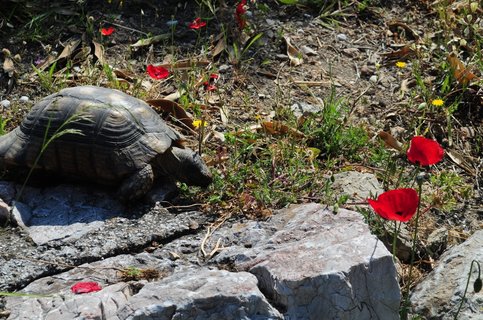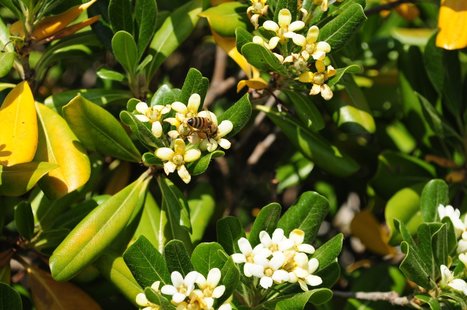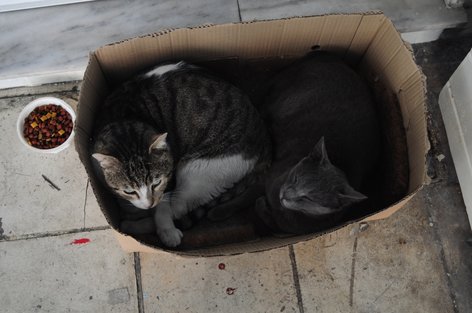It’s the small things in Athens during April: the touch of my feet on the ground upon embarking the tiny Aegean Airlines plane from Heathrow, the freshness in the air of the Attic countryside that quickly turns to choking gasoline fumes as the X95 barrels toward Syntagma. Of traipsing through the Kerameikos, losing count of the number of tortoises hidden amongst the red poppies and the slight aggravation of listening to tourists who are confused about how an archaeological site can also be a cemetery at the same time.
I went in for my usual καϊμάκι, but I noticed another flavour on the board: lemonanthoi. And thus proceeded a lively Greek conversation about the lemon blossoms out on the streets of Athens that percolate and permeate my senses in my wanderings during the Spring and early Summer. Turns out, the lady who runs the shop makes all of her ice cream from scratch (which I already knew), and she opened the fridge to show me a fresh handful of lemon blossoms. I felt that weakness in my knees that only Athens knows how to do so well: that everything in Greece collides in beauty, its roughness, its difficulties, its persistence. Lemon blossoms, orange blossoms: they are abundant in Athens this time of year, usually buzzing with bees and not too far from the jasmine.



 RSS Feed
RSS Feed